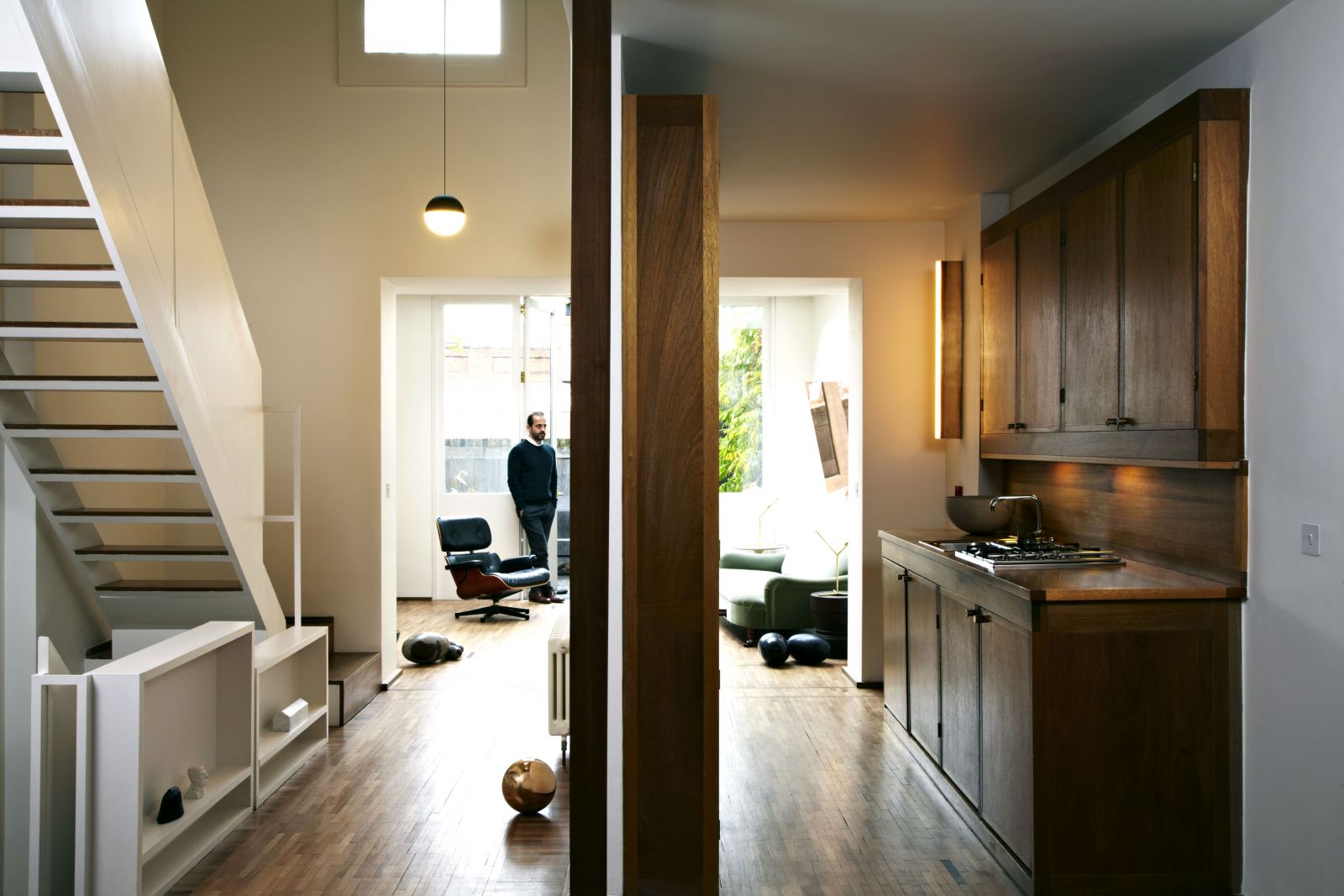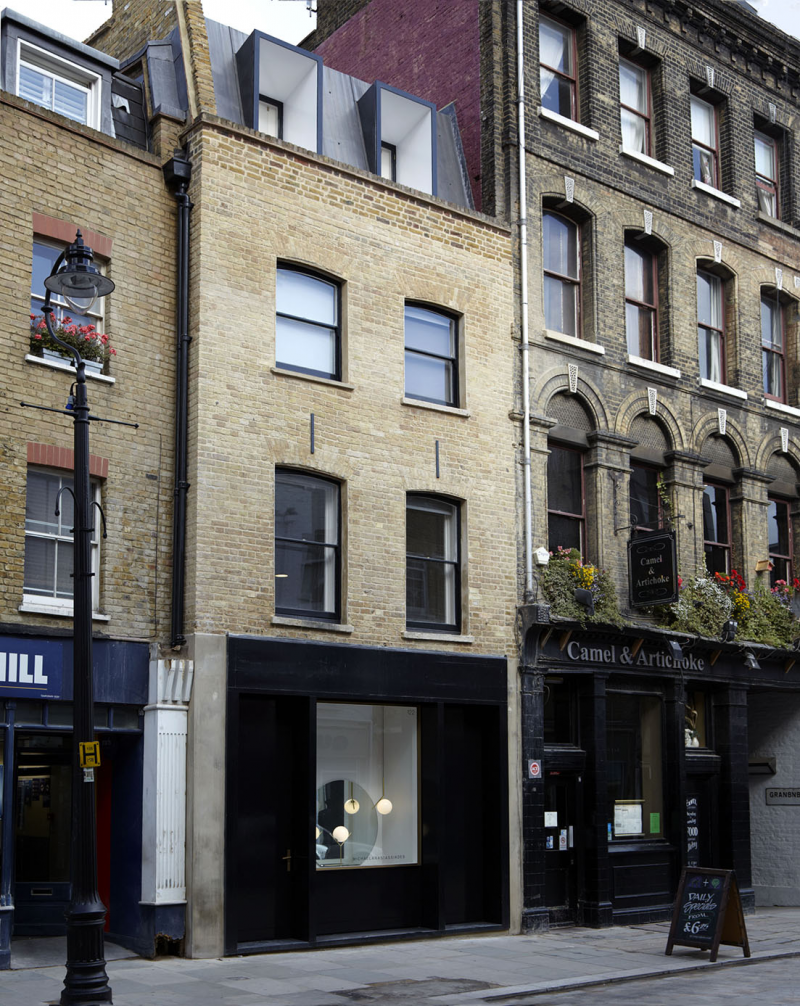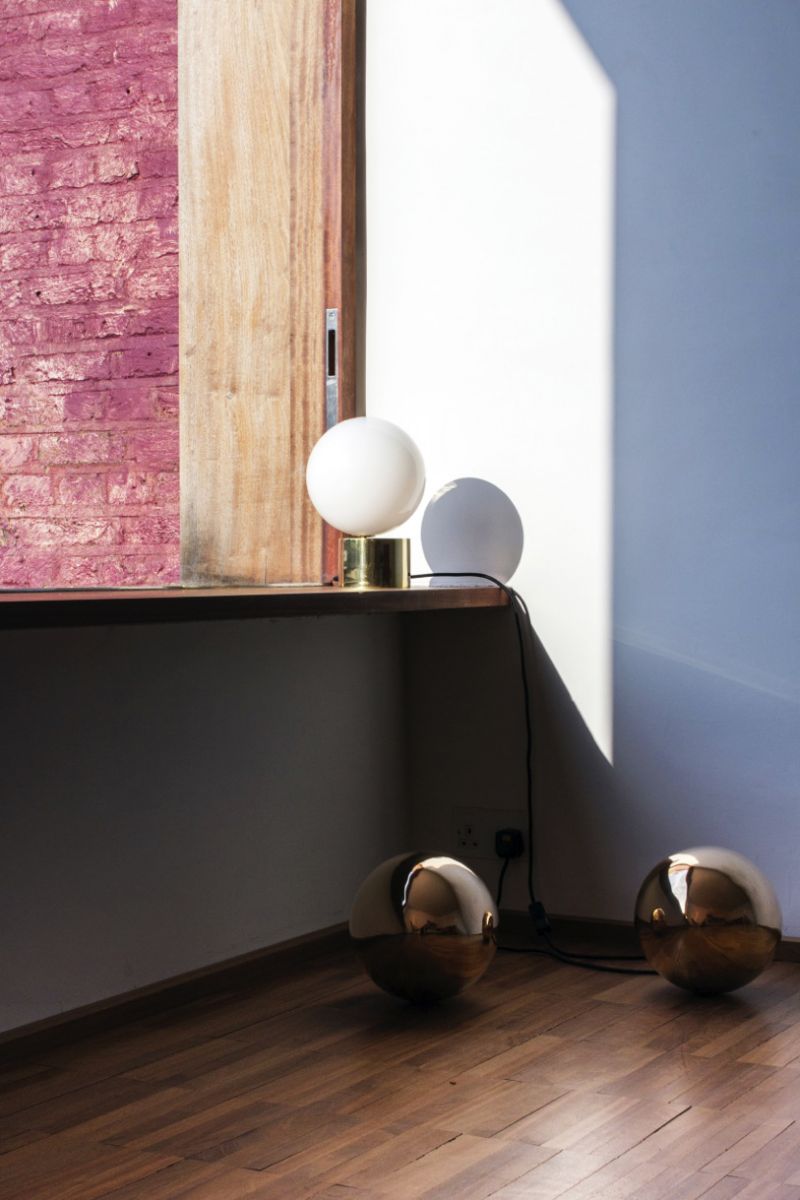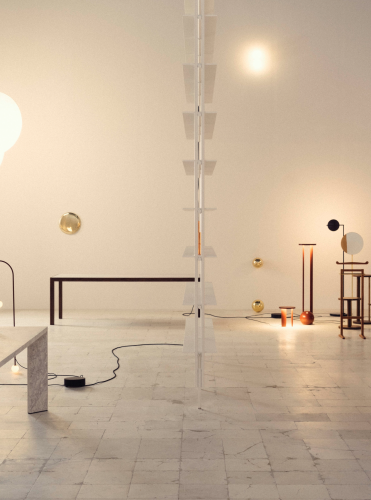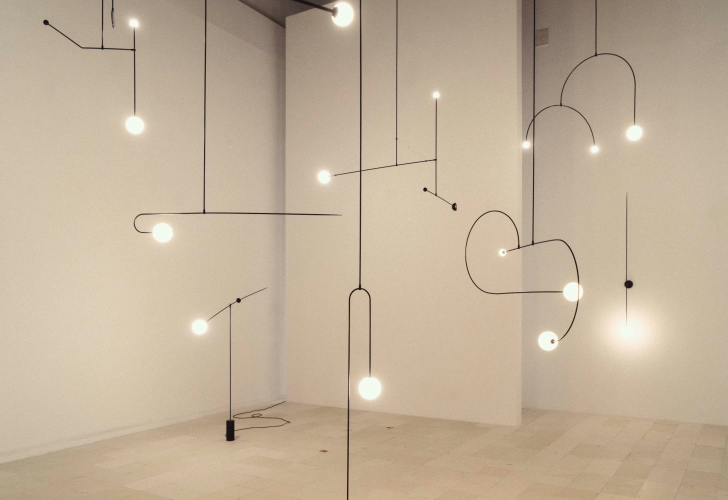In Waterloo, creativity flourishes in all shapes and sizes. There are two large theatres, many galleries and a host of specialized shops in the well-known nineteenth-century district in central London. ‘I live above the shop, like so many people in the past,’ Michael Anastassiades laughs good-humouredly. ‘At one time, this was a clothing store on a fairly busy market street. All houses had recognizable shop fronts: bakeries, butchers, greengrocers. I've seen a lot of change here in the last 20 years, but fortunately the neighbourhood hasn’t been gentrified as much as other parts of the city. Waterloo may be too close to the station for that. Some people think that isn’t all that chic.
’A few years after Anastassiades graduated from the Royal College of Arts, he managed to snap up this four-storey house and it has patiently remained one of his most long-term projects since. ‘The tail end included renovating the attic, insulating the roof and covering its exterior in lead. All in all, I have been hammering in nails for 20 years. When I first bought it, it had been abandoned for a quarter of a century. I started by restoring the construction and the most necessary facilities. But I had no kitchen at all for a long time, the bathroom was in my bedroom. After dinner with friends I had to wash the dishes in the tub. Once I’d gathered more money and energy, I’d renovate another floor. Now it's finally finished – and that’s good, because recently I haven’t had much time for renovations.’
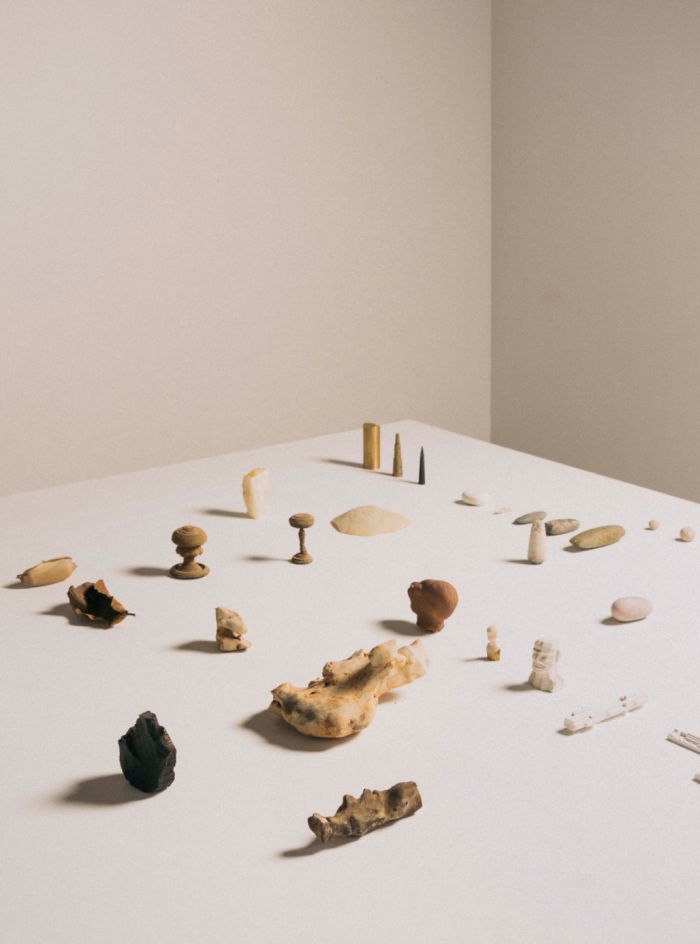
‘Unlike in the original floor plan, in which walls divided the house into traditional rooms, I opened up the floors as much as possible. I love the modernist idea of space and in addition, my mobiles and lighting look their best this way. Many of the products now included in the collections of Flos and Herman Miller have premiered here. The whole house continues to serve as a kind of laboratory annex exhibition space. As you go up, it becomes more private. The attic is my bedroom and the place where I listen to music, read books and do my yoga exercises.’ Balance not only explains this house, but also the spirit and work of Michael Anastassiades, who made a living as a yoga teacher for 15 years. Around 2007 he opened the doors of his house to the audience of the London Design Festival. It was only ten years ago that his mobiles and light sculptures were first discovered. Today, several of his designs are included in the museum collections of, among others, the MoMa, the V&A and the London Design Museum. It’s like a fairy tale. But logical reasoning goes a long way as well. Anastassiades is a natural at the kind of rare refinement and beauty that need time to mature. Only then can they flow freely.
Michael Anastassiades’s lighting and mobiles are refined objects that play with the balance between elements, lines and light. They have a distinct spatial effect. For exclusive interior design projects, Anastassiades often works with architects such as David Chipperfield, John Pawson and Studio Mumbai. Part of his work is available under his own label, but in 2014 Anastassiades also began making ground-breaking light families for Flos. Michael Anastassiades was born in the Greek part of Cyprus. He doesn’t come from a creative family but moved to London in the late 1980s to learn a profession that would provide economic prospects. During his studies as a civil engineer at the Imperial College, he walked past the Royal College of Art one day. There he discovered where his heart and his future lay. In 1993 he graduated from the RCA as an industrial designer. Fortunately, his engineering studies hadn’t been completely in vain, because during them Anastassiades developed ‘a sense of structure that comes in particularly handy in the business side of his profession’.
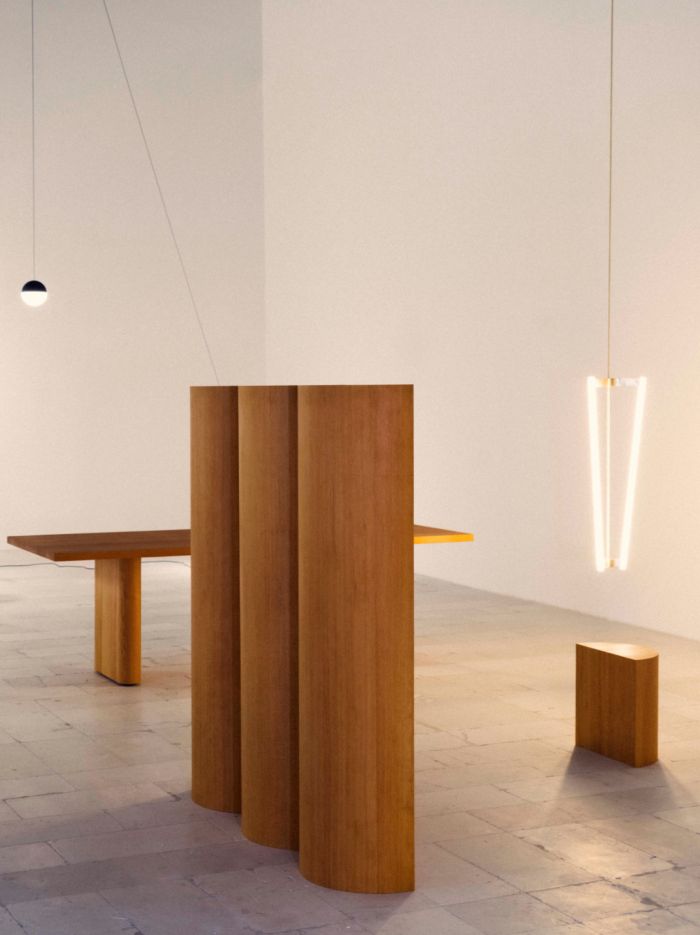
This interview and the images of Anastassides house were featured in the paper edition of WOTH issue No7 still available online:
